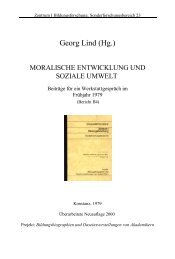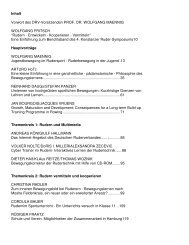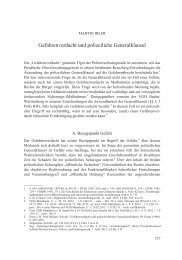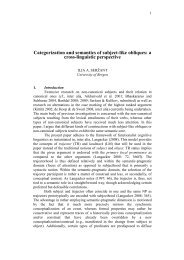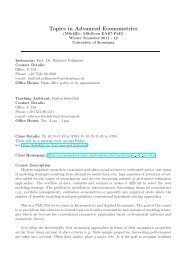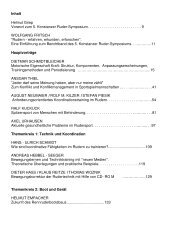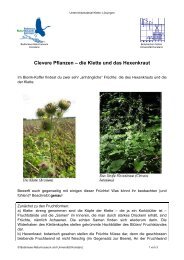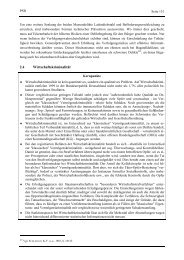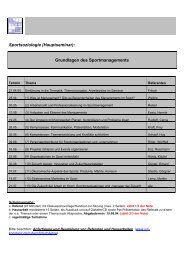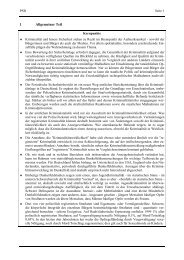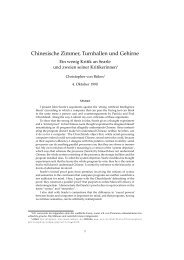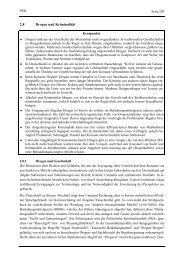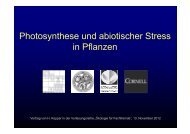Book of Abstracts Book of Abstracts - Universität Konstanz
Book of Abstracts Book of Abstracts - Universität Konstanz
Book of Abstracts Book of Abstracts - Universität Konstanz
Create successful ePaper yourself
Turn your PDF publications into a flip-book with our unique Google optimized e-Paper software.
Signatures <strong>of</strong> the Giant Dipole Resonance in the Response <strong>of</strong> Metal<br />
Clusters for Strong-Field Dual-Pulse Excitation<br />
Thomas Fennel, Tilo Döppner, Josef Tiggesbäumker and Karl-Heinz Meiwes-Broer<br />
Institut für Physik, <strong>Universität</strong> Rostock, <strong>Universität</strong>splatz 3, 18051 Rostock , Germany<br />
B - 31<br />
The response <strong>of</strong> metal clusters irradiated with a sequence <strong>of</strong> two femtosecond laser pulses is<br />
strongly dependent on the optical delay between the pulses. Recent experiments have shown<br />
that the adjustment <strong>of</strong> the delay provides a powerful way to control the coupling <strong>of</strong> strong laser<br />
radiation to finite systems. Both the yield <strong>of</strong> highly charged ions [1] as well as the kinetic<br />
energy <strong>of</strong> emitted electrons is strongly enhanced for a particular optimal delay. The dynamics <strong>of</strong><br />
the signals is much more pronounced compared to earlier measurements using stretched<br />
pulses [2].<br />
For the investigation <strong>of</strong> the time-dependent interaction <strong>of</strong> dual pulses with simple metal clusters<br />
numerical simulations have been performed using Thomas-Fermi-Vlasov molecular dynamics<br />
(TFV-MD) [3]. The semiclassical treatment allows a fully three-dimensional microscopic<br />
simulation <strong>of</strong> the laser-cluster interaction and provides a reasonable description <strong>of</strong> delocalized<br />
electrons in the cluster groundstate as well as the violent nonlinear response to a strong field<br />
close to TDLDA.<br />
Simulations on Na55 and Ag55 show that also in the strong field regime the most effective<br />
absorption is caused by resonant excitation <strong>of</strong> multi-plasmon modes. The calculations are in<br />
qualitative agreement with the measurements and clearly reproduce an optimal optical delay for<br />
enhanced ionization <strong>of</strong> the cluster [1], see Fig. 1, as well as a strong energy enhancement in the<br />
electron emission.<br />
Figure 1. (a) Calculated average charge <strong>of</strong> emitted ions after dual-pulse excitation <strong>of</strong> Na55 as a function <strong>of</strong><br />
the optical delay. Both pulses have a width <strong>of</strong> 50fs at a wavelength <strong>of</strong> 800nm. (b) Measured normalized<br />
dual-pulse signals <strong>of</strong> Ag 5+ from the explosion <strong>of</strong> silver clusters in helium droplets, resulting from the<br />
excitation with 130 fs pulses. Taken from Ref. [1].<br />
References<br />
[1] Döppner, Fennel et al., Phys. Rev. Lett, in press<br />
[2] Köller, Schumacher, Köhn et al., Phys. Rev. Lett. 82:3783, 1999<br />
[3] Fennel, Bertsch and Meiwes-Broer et al., Eur. Phys. J. D 29:367, 2004<br />
71



